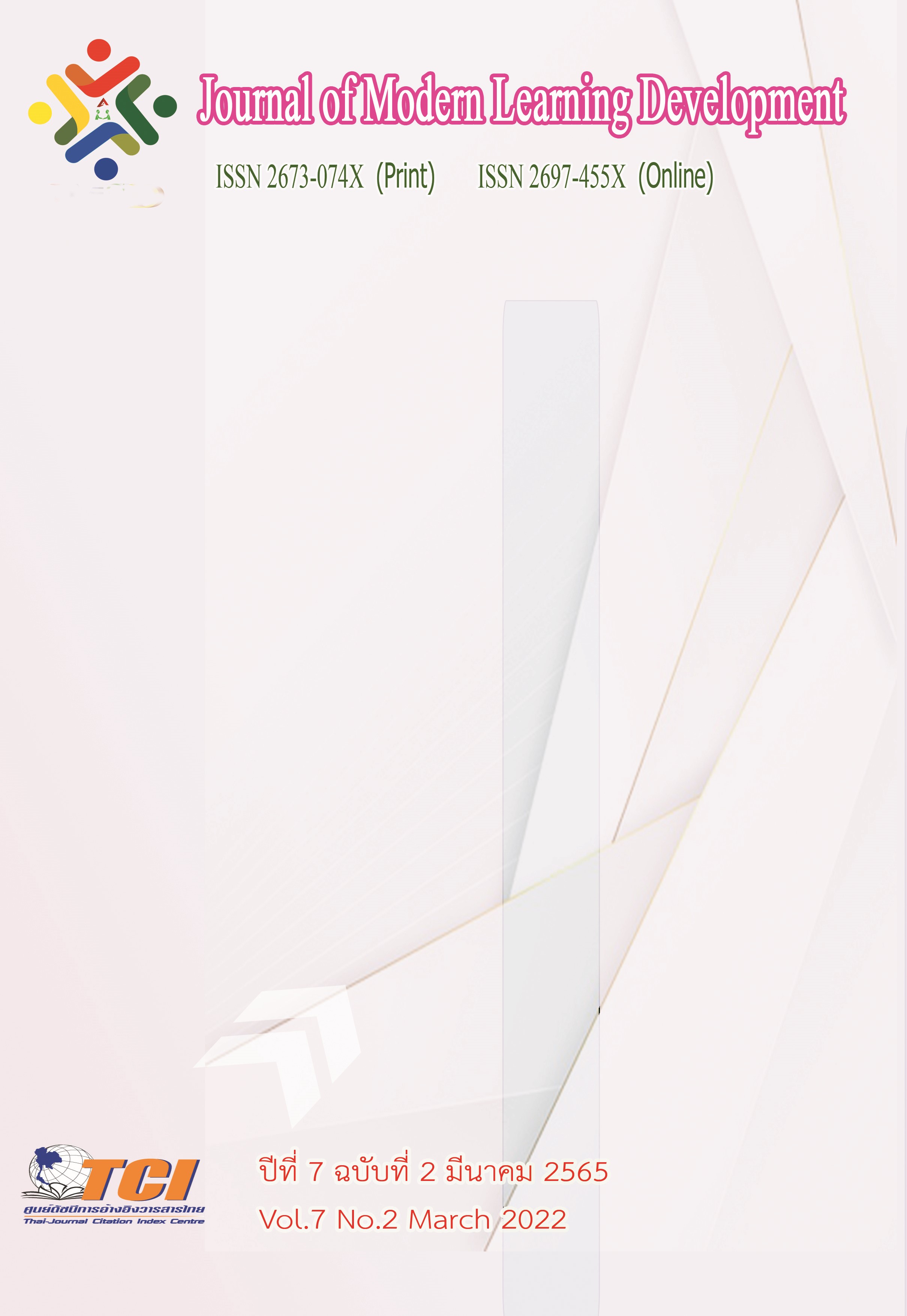The Composition Synthesis of High-Performance Organization (HPO)
Main Article Content
Abstract
An organization is a group of two or more people working together for the same goal by dividing roles and responsibilities but working towards the same objective. There are many concepts of organization, but the concept of high-performance organization is a contemporary concept that is constantly being brought up and studied in detail. This paper aims to synthesize high-performance organization components by using the approach of system theory as a guide for the synthesis. It was found that high-performance organization components consist of: Input factors dimensions are (1) Leadership, (2) have a clear mission, (3) Vision, outcomes and results-oriented, (4) Decentralization of powers to key personnel, (5) Improve the process structure to ensure the performance meets the needs of customers, (6) There is open communication and communication between stakeholders, (7)Commitment to the development of competences through the use of learning systems, (8) Shared power and involvement, (9) Systems, structures, processes and practices in high-performing organizations will be consistent and support the vision.
Process dimensions are (1) Process Management, (2) Systems and Structures, (3) Personnel development, 4) Create new processes to motivate and inspire success for people, (5) Continuous personnel development, (6) Promote competition in performance, (7) Focus & Alignment.
Product dimensions: (1) Focus on Customers and Performance, (2) Outcome-oriented, (3) Accountable, (4) Organizational Agility.
Outcome goal dimensions are (1)Innovative and flexible, (4)Open and collaborative, (3) Relentless focus on customer results, (5) Shared Values.
Organizational form dimensions are: (1) Self-management, (2) Organizational culture is the creation and instilling of organizational values to personnel, (3) Organisms of life, and (4) Machine-type organization.
Article Details
References
ทิพวรรณ หล่อสุวรรณรัตน์. (2551). ทฤษฎีองค์การสมัยใหม่. (พิมพ์ครั้งที่ 9). กรุงเทพมหานคร: รัตนไตร
นิสดารก์ เวชยานนท์. (2554). การบริหารทุนมนุษย์เชิงกลยุทธ์เพื่อเพิ่มมูลค่า. กรุงเทพมหานคร: สถาบันบัณฑิตพัฒนบริหารศาสตร์,
พสุ เดชะรินทร์. (2549). การพัฒนาองค์การให้มีขีดสมรรถนะสูง. กรุงเทพมหานคร: วีชั่น พริ้น แอนด์มีเดีย
สำนักงานคณะกรรมการพัฒนาระบบราชการ (2556). แผนยุทธศาสตร์การพัฒนาระบบราชการไทย (พ.ศ.2556 - พ.ศ.2561). กรุงเทพมหานคร: สำนักงานคณะกรรมการพัฒนาระบบราชการ (ก.พ.ร.).
เสกสรรค์ สนวา, ฉัตรณรงค์ศักดิ์ สุธรรมดี และวิไลลักษณ์ ขาวสะอาด. (2561). คุณลักษณะของผู้นำองค์การภาครัฐสมัยใหม่. วารสารมนุษยศาสตร์และสังคมศาสตร์ มหาวิทยาลัยราชภัฏสุรินทร์. 20 (พิเศษ), 399–411.
เสกสรรค์ สนวา, อภิชาติ ใจอารีย์ และระวี สัจจะโสภณ. (2564). สังเคราะห์กระบวนการพัฒนาทรัพยากรมนุษย์สู่ความเป็นชุมชนประชาธิปไตย. วารสารการเมืองการปกครอง มหาวิทยาลัยมหาสารคาม. 11 (3), 45–65.
เสาวลักษณ์ โกศลกิตติอัมพร และ สัญญา เคณาภูมิ. (2559). หลักการเบื้องต้นเกี่ยวกับองค์การและการจัดการ. วารสารวิชาการแพรวากาฬสินธุ์ มหาวิทยาลัยกาฬสินธุ์. 3 (1), 170-194.
Blanchard, K., D. Carew, and E. Parisi-Carew. (2000). One Minute Manager Builds High Performing Teams, The Rev: Harper Collins.
Blanchard, Ken. (2006). Leading at a Higher Level: Blanchard on Leadership and. Creating High Performing Organizations. USA: Prentice Hall.
Buytendijk, F. (2006). The five keys to building a high-performance organization. Business Performance Management Magazine. 4 (1), 24-47.
Edward E. Lawler. (1981). Pay and Organization Development. Addison-Wesley.
Holbeche, Linda. (2004). The High-Performance Organization; Creating dynamic stability and sustainable success.
Linder, J. C. & Brooks, J. D. (2004). Transforming the public sector. Outlook Journal. 60 (10), 68-76
Popovich, Mark G. (edt). (1998). Creating High-Performance Government Organization: A Practical Guide for Public Management. San Francisco, CA: Jossey-Bass Inc.
Schermerhorn, J. R., Hunt, J. G., & Osborn, R. N. (2003). Organizational Behavior. (9th ed.). New York: John Wiley & Sons, Inc.
Sentell, R. Perry Jr. (1995). "Local Government Law," Mercer Law Review, 47 (1), 108.
Appelbaum, H. Steven, & Vecchio P. Robert. (1995). Managing Organizational Behaviour: a Canadian Perspective. Harcourt Canada, Limited.
Waal, A.A. de (2008), The secret of High Performance Organizations, Management. Online. Review ,http://www.morexpertise.com/view/88, accessed June 11, 2008.


